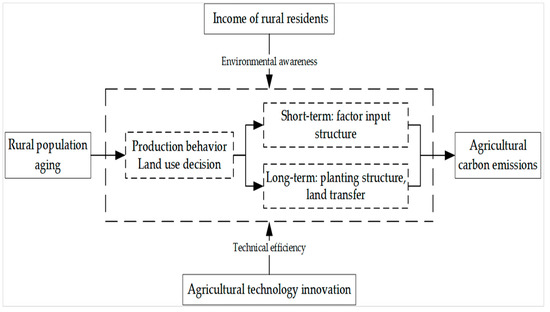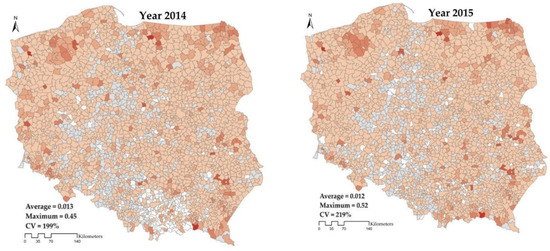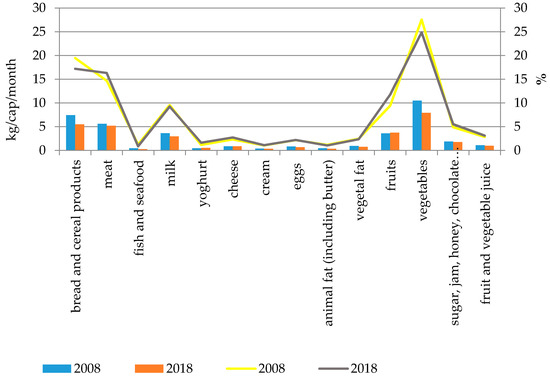Contemporary Challenges to the Sustainable Development of Agriculture and Rural Areas
A topical collection in Sustainability (ISSN 2071-1050). This collection belongs to the section "Sustainable Agriculture".
Viewed by 43568Editors
Interests: agricultural economics; agricultural competitiveness; farm competitiveness; bioeconomy; regional development; sustainable agriculture; agricultural and food trade
Special Issues, Collections and Topics in MDPI journals
Interests: green growth; green economy; sustainable development; green agriculture; green competitiveness; regional development; bioeconomy; circular economy
Topical Collection Information
Dear Colleagues,
The increasing rate of social and economic growth and the simultaneous progressing degradation of the natural environment lead to the accumulation of negative effects and disturbances in developing the process of satisfying multiple essential human needs. The aggravated harmfulness of these conditions creates an objective need for seeking effective, interdisciplinary solutions ensuring sustainable development in every area of individual and group human activity. The concept of sustainable development takes on special significance with reference to agriculture and rural areas, as the need for considering the priority of the natural environment in implementing strategic development objectives is especially important for those forms of activity where the results depend on nature.
The food-providing function of agriculture since its origins has given it a strategic place among other sectors of economy. Its social function is equally important, and in the face of escalating environmental problems the function connected with reducing external costs and producing environmental public goods has become complementary. The expectations towards agriculture are affected by the situation of global food markets. Changes to the economic map of the world, as well as not yet fully recognized new socio-economic phenomena (including economic downturns), have substantially affected the conditions of development in various parts of the world and economic sectors, including the agriculture sector. In light of these phenomena, agriculture, rural areas, and regional development are still growing in importance and currency.
This Issue welcomes papers related to existing and potential challenges regarding agriculture, considering spatial differences in its development, as well as measures taken under global, national, and sectoral policies. The Issue particularly encourages a multidisciplinary approach to problems and challenges related to agriculture, its role, sources of growth, and relations with global phenomena, including climate change. The Issue aims to combine research concerning challenges to the development of agriculture with challenges related to regional development. The area of interest of this issue comprises challenges related to sources of growth in agriculture, changes in the role of the agri-food sector, mechanisms for overcoming structural barriers to the development of agriculture and rural areas, building competitive advantages, convergence processes in agriculture, implementing the concept of sustainable development and green growth, investigating the role and effects of innovation in agriculture, as well as determining the role of farms towards climatic challenges.
This Special Issue also aims to make a contribution to a political debate on supporting the development of agriculture at the local, regional, and global levels, in order to meet the challenges facing this sector. It is meant for decision-makers dealing with agricultural, structural, and regional policy.
The Special Issue will include, but not be limited to, the following topics:
- Economics of agricultural resources;
- Sustainability of the agriculture sector;
- Competitiveness and innovativeness of the agri-food system;
- The role of the agriculture sector in regional and rural development;
- Circular economy and bioeconomy in the agriculture sector.
Prof. Dr. Anna Nowak
Prof. Dr. Armand Kasztelan
Guest Editors
Manuscript Submission Information
Manuscripts should be submitted online at www.mdpi.com by registering and logging in to this website. Once you are registered, click here to go to the submission form. Manuscripts can be submitted until the deadline. All submissions that pass pre-check are peer-reviewed. Accepted papers will be published continuously in the journal (as soon as accepted) and will be listed together on the collection website. Research articles, review articles as well as short communications are invited. For planned papers, a title and short abstract (about 100 words) can be sent to the Editorial Office for announcement on this website.
Submitted manuscripts should not have been published previously, nor be under consideration for publication elsewhere (except conference proceedings papers). All manuscripts are thoroughly refereed through a single-blind peer-review process. A guide for authors and other relevant information for submission of manuscripts is available on the Instructions for Authors page. Sustainability is an international peer-reviewed open access semimonthly journal published by MDPI.
Please visit the Instructions for Authors page before submitting a manuscript. The Article Processing Charge (APC) for publication in this open access journal is 2400 CHF (Swiss Francs). Submitted papers should be well formatted and use good English. Authors may use MDPI's English editing service prior to publication or during author revisions.
Keywords
- sustainable agriculture
- agricultural economics
- regional development
- rural development
- bioeconomy
- circular economy
- agricultural innovation
- competitiveness
- economic efficiency and eco-efficiency













